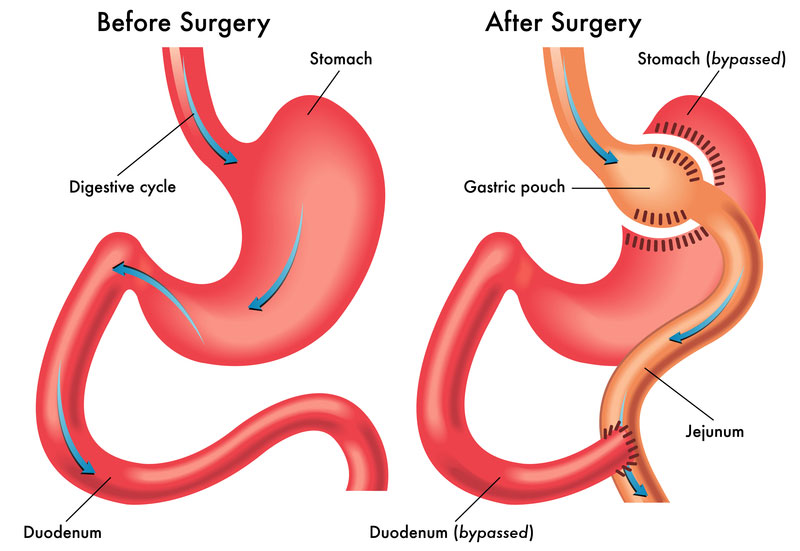How Bariatric Surgery Works: A Lifesaving Option for Long-Term Weight Loss
- George Abraham
- Aug 5
- 4 min read
Obesity isn’t just a number on the scale. It’s a complex, chronic condition that can quietly fuel a range of health problems—from type 2 diabetes and heart disease to sleep apnea and joint damage. For many, diet and exercise alone aren’t enough. That’s where bariatric surgery comes in. At Adam Vital Hospital, we believe in empowering patients with knowledge, not just procedures. So let’s break it down—what bariatric surgery really is, how it works, and what to expect from the journey.
What is Bariatric Surgery?
Bariatric surgery, commonly known as weight-loss surgery, is a set of surgical procedures designed to help people lose weight by altering the digestive system. It’s not cosmetic surgery. It's a serious medical intervention often recommended for people with severe obesity—typically a BMI (Body Mass Index) of 40 or higher, or 35 and above with serious obesity-related health issues.
There are different types of bariatric surgeries, and each works in slightly different ways. But the ultimate goal is the same: to reduce the amount of food your body can absorb and process, leading to sustainable weight loss and better overall health.

The Most Common Types of Bariatric Surgery
At Adam Vital Hospital, our bariatric team performs the most advanced and evidence-based procedures available today. Here’s a look at the most common ones:
1. Sleeve Gastrectomy (Gastric Sleeve)
This is currently one of the most popular bariatric procedures worldwide. In this surgery, about 75-80% of the stomach is removed, leaving a narrow, tube-like "sleeve."
How it works:
Physically reduces the size of your stomach, so you feel full with less food.
Removes the part of the stomach that produces ghrelin, the hormone responsible for hunger.
Does not involve rerouting intestines.
Advantages:
Shorter surgery time and recovery.
No foreign implants or re-routing of intestines.
Effective weight loss with fewer complications.
2. Roux-en-Y Gastric Bypass
This is a more complex procedure but often delivers dramatic and long-lasting results. It involves creating a small stomach pouch and bypassing a portion of the small intestine.
How it works:
You feel full quickly because of the smaller stomach pouch.
Fewer calories and nutrients are absorbed due to the bypass.
Alters gut hormones, leading to reduced hunger and improved insulin sensitivity.
Advantages:
Often leads to faster weight loss than the sleeve.
Especially effective for patients with type 2 diabetes, acid reflux, and metabolic syndrome.
3. Adjustable Gastric Banding (Lap Band)
Although less common today, this surgery involves placing a silicone band around the upper part of the stomach to create a small pouch.
How it works:
The band can be tightened or loosened over time.
Slows digestion and limits food intake.
Less invasive but requires long-term follow-up and adjustments.
Note: This method is being used less often due to lower long-term weight loss results and higher rates of reoperation.
What Happens Before the Surgery?
Bariatric surgery isn’t a one-size-fits-all quick fix. It’s a medical journey that starts long before you enter the operating room.
At Adam Vital Hospital, our process begins with:
A comprehensive medical evaluation
Blood work and imaging to check for underlying conditions
Consultations with our bariatric surgeon, dietitian, psychologist, and endocrinologist
A monitored pre-surgery diet to reduce liver size and improve surgical safety
Guidance on what to expect physically and emotionally post-surgery
What Happens After Surgery?
This is where the real transformation begins. Bariatric surgery is a powerful tool, but it must be combined with lifestyle changes to be effective long-term.
Patients at Adam Vital Hospital receive:
Nutrition support for learning portion control, healthy choices, and vitamin supplementation
Ongoing psychological guidance to address emotional triggers, food addiction, or eating disorders
Regular follow-up appointments to monitor weight loss, vitamin levels, and overall health
Access to support groups and one-on-one counseling sessions
Within 12–18 months, most patients lose 60–80% of their excess weight—but more importantly, they often see reversal or significant improvement in:
Type 2 diabetes
High blood pressure
Sleep apnea
PCOS
Joint pain
Fatty liver disease
Why Choose Adam Vital Hospital for Bariatric Surgery in Dubai?
At Adam Vital Hospital, we don’t believe in cookie-cutter care. Every patient receives a personalized treatment plan tailored to their unique health profile, challenges, and goals. Our multidisciplinary team of surgeons, nutritionists, psychologists, and endocrinologists work in sync to guide you from the first consultation through your long-term success.
We combine advanced laparoscopic surgical techniques with internationally accredited safety standards, all within a compassionate, patient-first environment.
Final Thoughts
Bariatric surgery is not the “easy way out.” It’s a serious decision for those who have tried everything and are ready for real change. But when done right—with the right mindset, support, and team—it can be life-saving and life-transforming.
If you’re considering bariatric surgery, don’t go it alone. Let the experts at Adam Vital Hospital help you explore your options with confidence and care.
Take the first step toward reclaiming your health.
Contact Adam Vital Hospital today for a bariatric consultation.

Comments